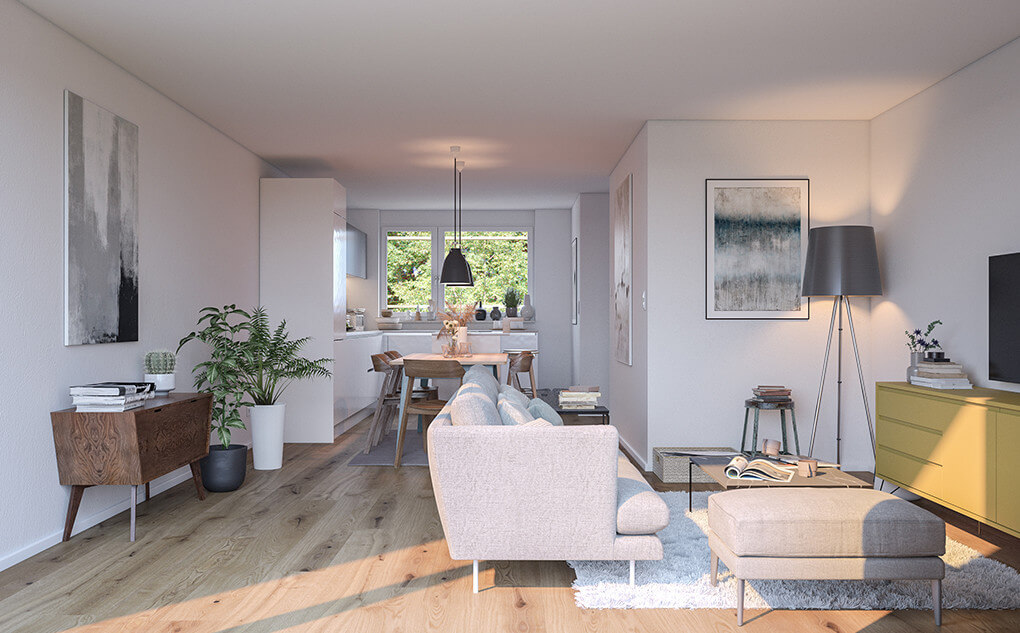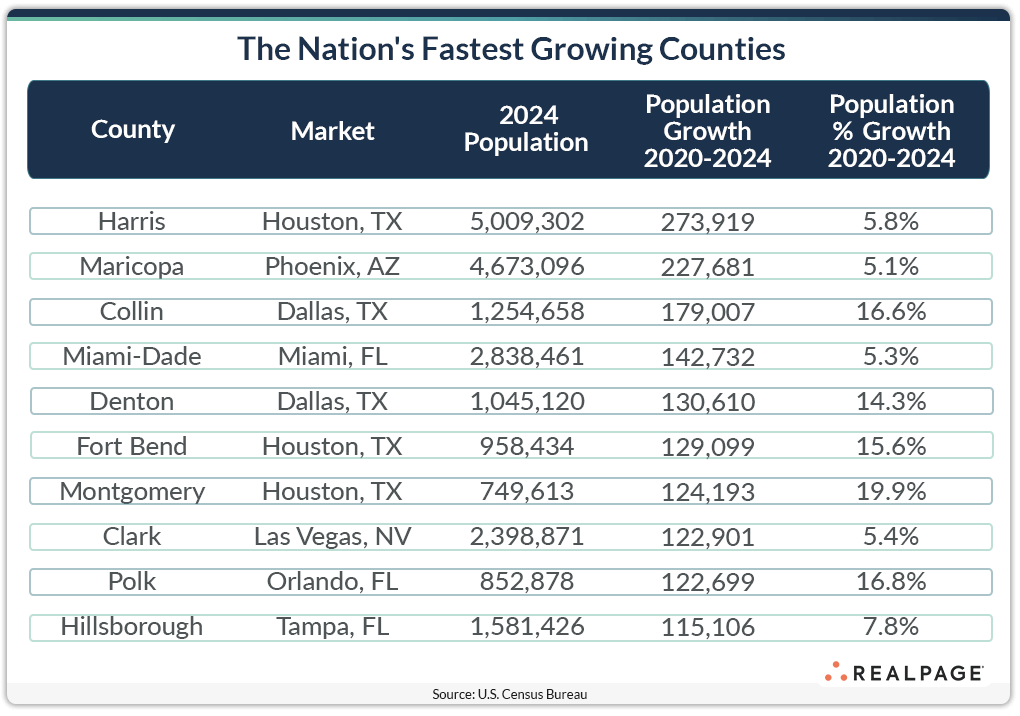Eight Large Submarkets with Inventory Growth of More Than 50%

Eight large submarkets nationwide have seen their existing apartment count increase by 50% or more in the past five years.
Among the nation’s largest 150 apartment markets, there are 996 submarkets. Among those submarkets, 36 saw their existing inventory count increase by more than 50% in the past five years, according to data from RealPage Market Analytics.
While smaller submarkets tend to see bigger percentage growth rates given their relative size, there were eight submarkets with an existing unit count of more than 30,000 units as of early 2025 that grew their inventories by more than half since early 2020. For reference, these submarkets have more apartment stock than 27 markets among the nation’s largest 150. The largest of those markets is Sioux Falls, SD, with stock of 30,000 units in 1st quarter 2025, while the smallest is Fort Collins, CO, which has a total existing stock of about 24,400 units.
Phoenix’s western suburban Avondale/Goodyear/West Glendale was the nation’s fastest growing submarket, with an existing product base that swelled by 116.7% between early 2020 and early 2025. In comparison, the U.S. overall saw its apartment inventory increase by 11.3% during that time frame, while Phoenix itself saw average growth of 21.5%. Avondale, Goodyear and the western portion of Glendale are all located within Maricopa County, which was one of the fastest growing counties nationwide between 2020 and 2024. According to the latest estimates from the U.S. Census Bureau, Maricopa County added nearly 227,700 new residents in that time frame. This was the second biggest increase, following only Harris County in Houston.
It’s no surprise that five of the eight submarkets on this list are in Texas. Two – East Austin and Dallas’ Frisco – appeared on our list of Texas submarkets with explosive growth in the past decade. But three of these Texas submarkets are making this list just for the past five years, specifically, meaning their growth explosion has happened more recently. All of these are suburban submarkets.
Austin’s Round Rock/Georgetown grew existing apartment stock by 69.9% in the past five years, more than twice Austin’s average growth rate of 33.3%, which was the fastest market among the nation’s largest 50 markets. Round Rock/Georgetown is a thriving tech hub and is right next door to the popular Cedar Park submarket. This area draws young renters with its tech base, anchored by Dell Technologies. Austin overall saw a notable rise in renter-age population in recent years. The base of 20- to 34-year-olds in Austin increased by a nation-leading 8,900 residents between 2022 and 2023, translating to growth of 1.6%. Round Rock and Georgetown are both in Williamson County, which just missed the top 10 Census list for big population growth in the 2020–2024-time frame. Roughly 111,800 residents were added to the area, growing the local population by a sizable 18.2%.
Dallas’ northern suburb Allen/McKinney saw its existing rental base increase by 67.3% between 1st quarter 2020 and 1st quarter 2025. Allen/McKinney is the biggest submarket on this list, with over 41,300 units within its borders. Allen and McKinney are both located in Collin County, which was the nation’s third-fastest population growth county in 2020-2024, with an increase of about 179,000 people. That translated to a hefty 16.6% growth rate. Just east of Collin County, Denton County also saw sizable population growth in the past few years.
Houston’s western suburban Katy completed over 10,500 units in the past five years, increasing the existing apartment base by 52.1%. Katy is located at the intersection of Harris, Fort Bend and Waller counties. Harris County was the nation’s fastest growing county in 2020-2024, with population growth of a stunning 273,900 people. But Fort Bend County also made a top 10 standing, with population growth of over 129,000 people, #6 nationwide.

The only urban core submarket on the list, Central Nashville’s existing unit base swelled by 56.6% in the early 2020 to early 2025-time frame, with the addition of nearly 12,800 new apartments. Davidson County didn’t see as much population growth as some of the other areas on this list. Roughly 13,400 residents were added to the Davidson County population between 2020 and 2024. It should also be noted that, as the only urban core area on the list, Central Nashville is a much smaller submarket in relative size that some of the suburban locales, which have more ability to sprawl.
Northeast Denver is also slightly urban, though some of the outer areas are considered close-in suburban. Apartment developers finished nearly 11,000 new units in the past five years in Northeast Denver, growing the existing base by 51.7%. The Northeast Denver submarket is in Denver County, which saw smaller relative population growth of about 11,400 people in the 2020-2024 period.







